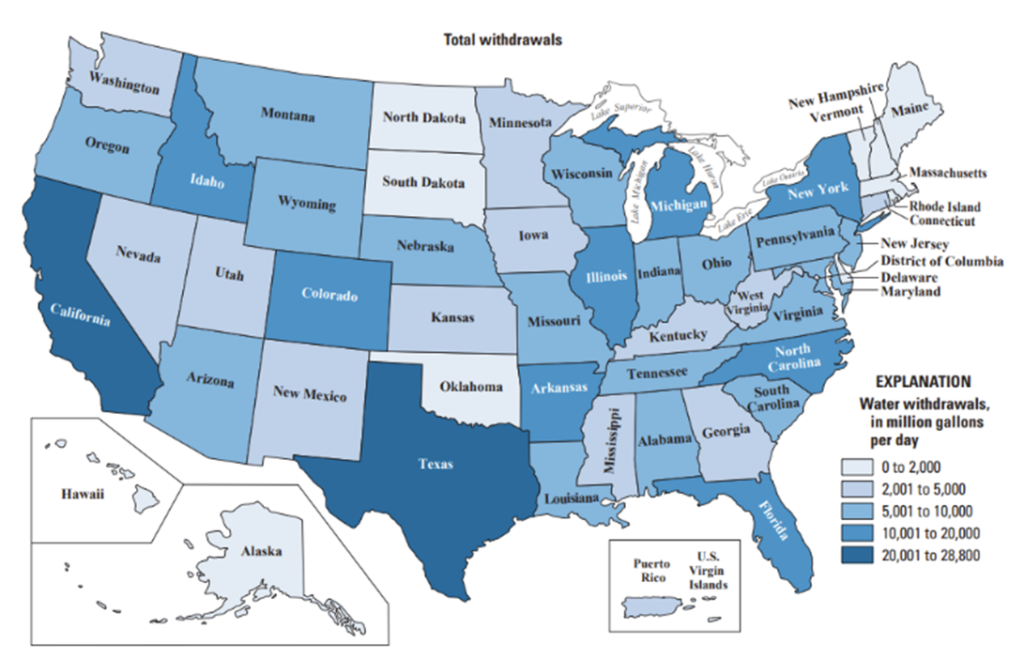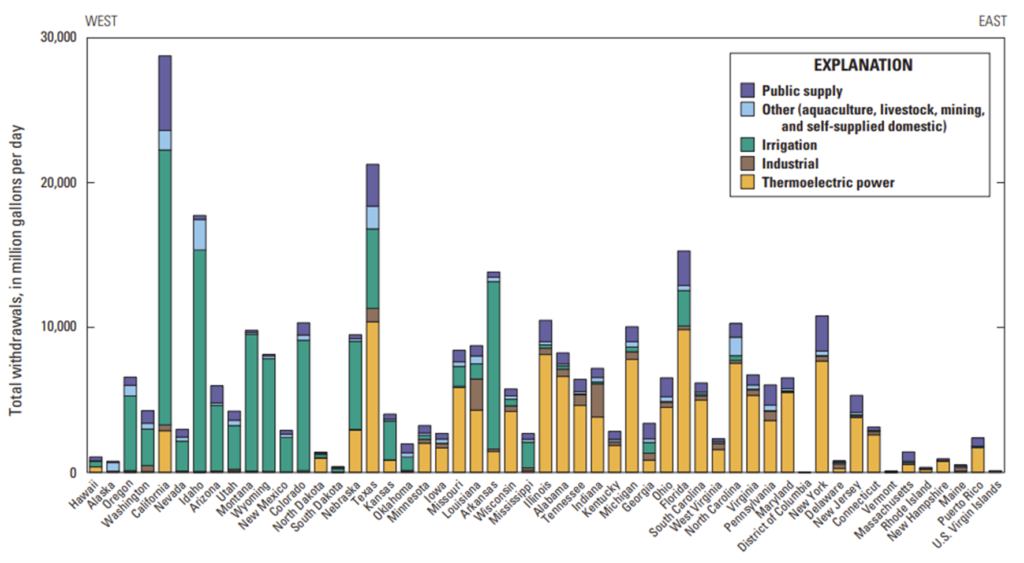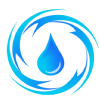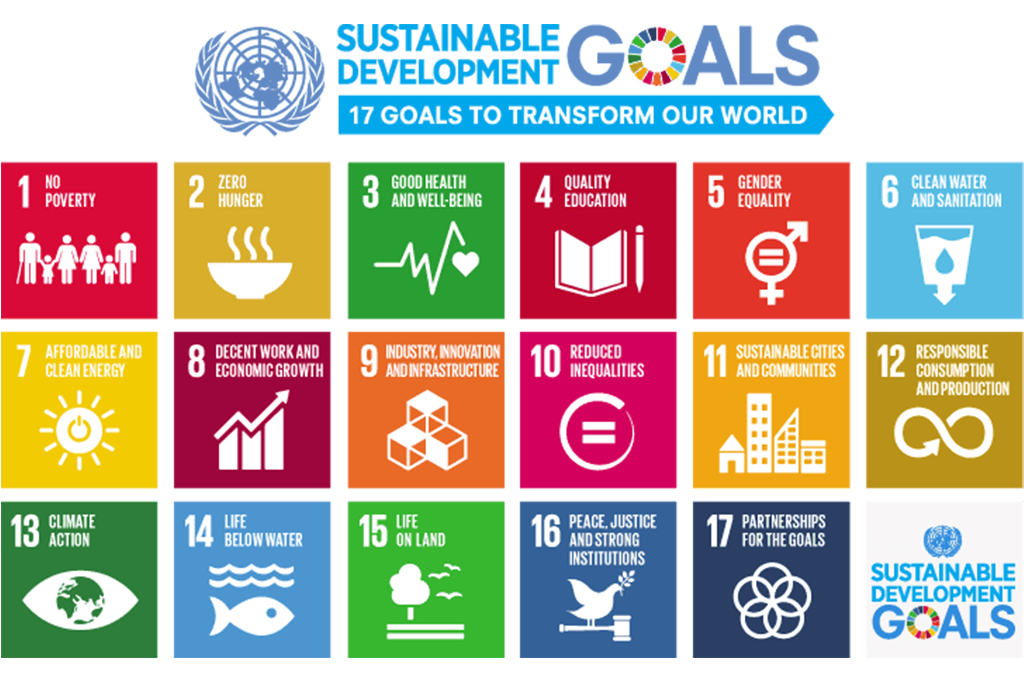Figure 1: Community Water Reuse (Water & Resource Recovery Lab, University of Alberta)[1]
Water, the elixir of life, is under threat. Across the globe, water wastage has emerged as a significant challenge with profound environmental, economic, and social repercussions. According to the World Bank, in many urbanized regions, a staggering 20-30% of treated water never reaches its intended users, lost in transit due to leaky pipes and deteriorating infrastructure. This alarming statistic is not an isolated urban phenomenon. The U.S. Environmental Protection Agency (EPA) reports that an average American household loses more than 10,000 gallons of water each year from household leaks[2]. The agricultural sector, which plays a pivotal role in the economies of numerous countries, is not exempt from inefficiencies. Traditional flood irrigation methods, still prevalent in many farming communities, have a dismal efficiency rate, with only about 40-50% of the water genuinely benefiting the crops per Water Footprint Calculator[3]. Such glaring inefficiencies underscore the pressing need for robust water use reduction and reuse strategies. By proactively addressing these challenges, we can pave the way for a sustainable water future, ensuring that both current and future generations have access to this vital resource, and safeguarding the myriad ecosystems that are intricately linked to water. This blog reviews how global water and scarcity challenges require robust water use reduction and reuse strategies (in residential, commercial, and industrial sectors), complemented by demand-side management strategies to optimize resource utilization and foster sustainable consumption.
Estimated Use of Water in the United States in 2015

Figure 2: Total water withdrawals by category, 2015 (Source: U.S. Geological Survey)[4]
The multifaceted benefits of water use reduction are becoming increasingly evident in today’s rapidly changing global landscape. The World Resources Institute paints a somber picture, predicting that if current trends persist, nearly half of the world’s population will find themselves in areas plagued by high water stress by 2040[5]. The relentless march of urbanization, coupled with significant population growth and the unpredictable vagaries of climate change, only serves to amplify this demand. However, amidst this seemingly bleak scenario lies a beacon of hope. By wholeheartedly embracing water-efficient practices and technologies, we can usher in a new era of freshwater conservation, realize tangible energy and economic savings, and foster a culture of sustainability. For the everyday homeowner, this could translate to the installation of cutting-edge water-efficient fixtures, the diligent monitoring and repair of plumbing leaks, and the adoption of sustainable landscaping techniques such as drip irrigation and smart controllers. Commercial entities, on the other hand, can make a marked difference by instituting regular water audits, championing employee training initiatives focused on water conservation, and spearheading the implementation of state-of-the-art water recycling systems. The industrial sector, often viewed as a significant water consumer, can redefine its relationship with this precious resource by optimizing water-intensive processes, pouring investments into advanced wastewater treatment technologies, and crafting comprehensive, forward-thinking water management strategies.
Estimated Use of Water in the United States in 2015

Figure 3: Total Water Withdrawals by U.S. State, 2015 (Source: U.S. Geological Survey)[6]
Parallel to water use reduction efforts, water reuse strategies have emerged as a cornerstone in the global response to looming water scarcity challenges. The United Nations offers a sobering projection: by 2025, one-half of the world’s population could be living in areas facing water scarcity[7]. In this context, the importance of water reuse becomes paramount. Residential users can play their part by championing greywater recycling initiatives and pioneering rainwater harvesting systems. Commercial stakeholders can prioritize the deployment of efficient plumbing solutions and innovative water recycling systems tailored to their unique needs. Simultaneously, the industrial behemoths can lead the charge by implementing closed-loop water systems, investing in cutting-edge water purification technologies, and forging collaborative partnerships with local wastewater treatment facilities. As an example, thermoelectric power accounts for over 40% of U.S. water usage, the largest volume of which is used for cooling. This summer, I did an internship with The National Renewable Energy Laboratory (NREL) on a joint project with The Electric Power Research Institute (EPRI), where we reviewed how The Salt River Project power generating stations in Arizona are reducing their carbon emissions by using reclaimed water for their colling tower water need. These concerted efforts not only serve to conserve dwindling freshwater resources but also usher in a host of ancillary benefits, from significant cost savings to enhanced environmental stewardship.
Estimated Use of Water in the United States in 2015

Figure 4: Total Water Withdrawal by Category, by U.S. State, (Source: U.S. Geological Survey)[8]
Lastly, as we navigate the complexities of resource conservation, the role of demand-side management (DSM) strategies cannot be overstated. Rooted in a holistic philosophy, DSM strategies encompass a broad spectrum of resources, from energy to water, and are underpinned by a singular vision: to optimize resource utilization, minimize waste, and foster a culture of efficient consumption. These multifaceted strategies span a wide gamut, from the promotion of energy-efficient technologies and the strategic shifting of peak load demands to the championing of water conservation initiatives and the implementation of dynamic time-of-use pricing models (U.S. Department of Energy). By weaving these strategies into the very fabric of our societies, we can set the stage for a sustainable future, marked by reduced environmental impacts and the judicious, responsible use of our planet’s finite resources.
It is not too farfetched to think that by 2030, there will be significant push and buy-in towards mandating rainwater harvesting, water reuse, renewable energy, and demand-side management of energy load (by type of energy source). Deploying advanced metering infrastructure and grid management systems to enable real-time monitoring and control of energy distribution will allow for more efficient resource allocation and demand response. I am working on a research paper that discusses decarbonization of water desalination by integrating renewable energy into the smart grid and optimizing energy mix using artificial intelligence.
References:
[1] Water Reuse and Resource Recovery Syetems, University of Alberta
[2] City of Scottsdale – Residential Water Use (scottsdaleaz.gov)
[3] Water Footprint Calculator, Why All Farms Don’t use Drip Irrigation, 9/9/2022
[4] Estimated Use of Water in the United States in 2015, U.S. Geological Survey, Circular 1441. https://pubs.usgs.gov/circ/1441/circ1441.pdf
[5] Ranking the World’s Most Water-Stressed Countries in 2040
[6] Estimated Use of Water in the United States in 2015, U.S. Geological Survey, Circular 1441. https://pubs.usgs.gov/circ/1441/circ1441.pdf
[7] UNICEF, Water Scarcity, Addressing the growing lack of available water to meet children’s needs.
[8] Estimated Use of Water in the United States in 2015, U.S. Geological Survey, Circular 1441. https://pubs.usgs.gov/circ/1441/circ1441.pdf









